The Big Read: From the boondocks to waterfront town, Punggol grapples with growing pains and traffic jams
SINGAPORE — Travelling from Sengkang to Punggol should take 20 minutes by bus, but for Ms Denise Wong’s husband, the journey home typically lasts an hour.
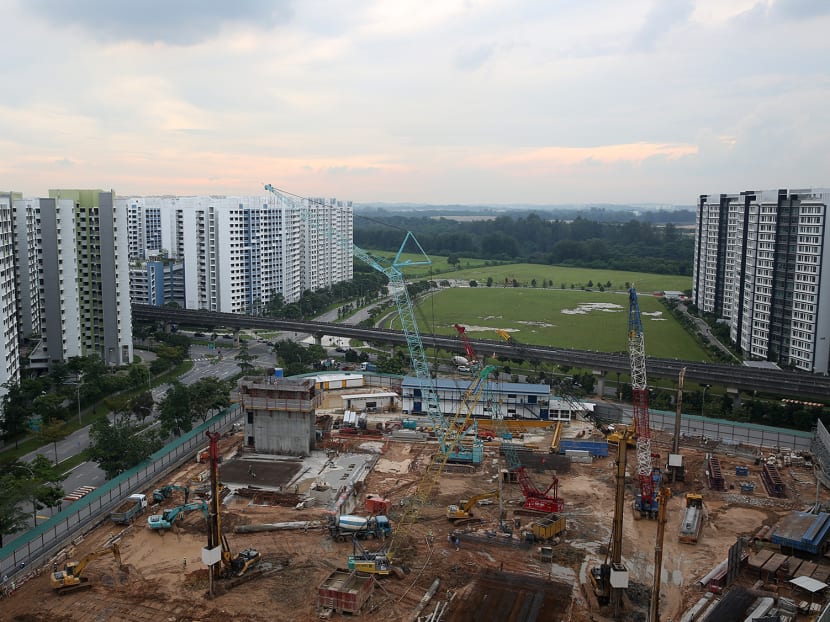
An aerial shot of a construction site in Punggol amongst HDB flats. As Punggol morphs into one of the largest housing estates in Singapore, its transport woes continue to persist unabated — so much so that some new residents are already thinking of moving out.
SINGAPORE — Travelling from Sengkang to Punggol should take 20 minutes by bus, but for Ms Denise Wong’s husband, the journey home typically lasts an hour.
"My husband is already exhausted after work, and the traffic jam tires him out even more,” the 33-year-old homemaker lamented.
In the five years since they bought a new Housing and Development Board (HDB) flat at Punggol Way, the Light Rail Transit (LRT) and North East Line serving the town have also gotten more crowded, Ms Wong said.
In fact, she is already thinking about moving out of the new town, which has become too “hot and crowded” due to the urban sprawl.
“The transportation, facilities and malls are not growing as fast as the population. That has caused a lot of inconvenience,” she said.
The traffic congestion also serves as a real headache for Ms Alia Mohamed, who has lived at Edgedale Plains for over a year and drives to Suntec City for work.
“It will take me 15 to 20 minutes if I travel to work on the weekends. During the weekdays, it can take an hour,” the 33-year-old facilities manager said.
The traffic congestion in Punggol has been a long-standing problem, having first surfaced at least five years ago. In 2013, Punggol residents griped about the pace of transport infrastructure improvements, which they felt were lagging behind the population boom.
As Punggol morphs into one of the largest housing estates in Singapore with a slew of new developments — it is projected to be twice the size of Ang Mo Kio — its transport woes continue to persist unabated. The ongoing road works to help the transport infrastructure play catch-up further adds to the congestion and inconvenience, much to the chagrin of residents.
.embed-container { position: relative; padding-bottom: 56.25%; height: 0; overflow: hidden; max-width: 100%; } .embed-container iframe, .embed-container object, .embed-container embed { position: absolute; top: 0; left: 0; width: 100%; height: 100%; }It was not too long ago when the mere mention of “Punggol” brought to mind the boondocks. Back in 1970s and 80s, pig farms were a common sight in Punggol, recalled 44-year-old Lee Ngee Chong.
“My relatives and grandparents used to live in attap houses in Punggol. Every Sunday, (my family and I) will drive up to the ‘countryside’ and Upper Serangoon Road was the only way to Punggol, so this place has many memories for me,” Mr Lee said with a chuckle.
Life has come a full circle for the self-employed Mr Lee, who has been living in a four-room HDB flat at Punggol Way with his family for the past five years. They had moved from Toa Payoh, where they had stayed for over 20 years.
While he finds the environment in Punggol to be relaxing, the traffic congestion is a major annoyance for him — enough for him to also consider moving out.
"If the traffic worsens, I may want to get out of (Punggol). In the five years that I have lived here, the traffic has worsened,” he said.
Last week, the Land Transport Authority (LTA) announced that a new link road connecting Punggol Central to Kallang-Paya Lebar Expressway (KPE) and Tampines Expressway (TPE) will open on Nov 25, almost a year ahead of schedule.
In June last year, the LTA also brought forward the opening date of Punggol Coast MRT Station from 2030 to 2023 — a good seven years — to beef up transport infrastructure in the area.
The station will serve residential estates in the Northshore District and Punggol Point District, in time for the first batch of 5,300 Build-to-Order units across seven projects due to be completed in 2020.
Long-time resident Dominic Cheong, who has lived in Punggol for over 20 years, said that while he is looking forward to the new link road, he expects it to be insufficient in just a few years.
The 56-year-old businessman said: “The new roads may alleviate the situation temporarily, but when the population starts growing again, it will be status quo in two to three years.”
Punggol’s journey from a sleepy district to a spanking new waterfront town began way back in 1996, when then-Prime Minister Goh Chok Tong first announced the idea to develop Punggol. But the project — known as “Punggol 21” — got off to a rocky start due to the Asian financial crisis in 1997 and 1998.
The vision for Punggol was rebooted in 2007 with the “Punggol 21-plus” project unveiled by Prime Minister Lee Hsien Loong. The goal is to transform the area into a waterfront town of the 21st century.
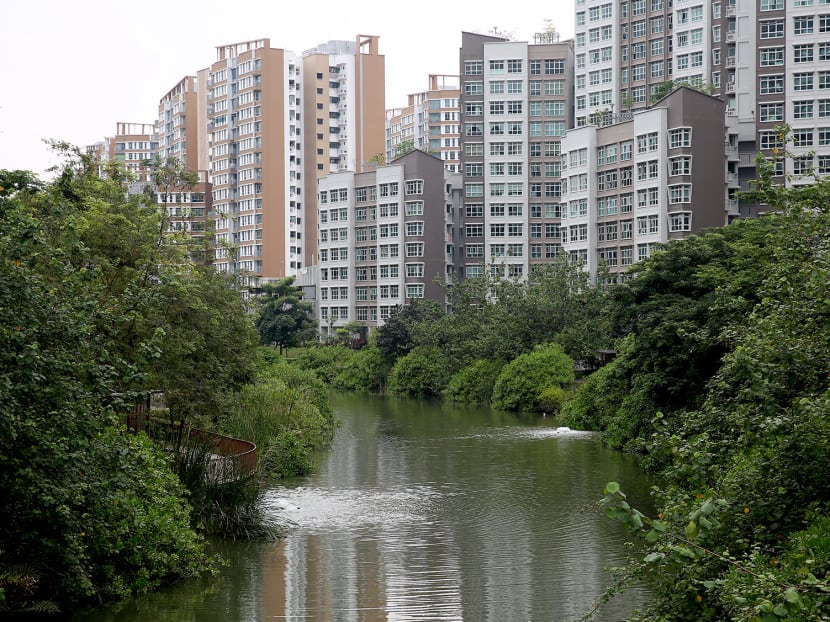
Of the 11 districts in Punggol, seven feature waterfront living. Of the seven waterfront housing districts, five have been launched, while the remaining two will be located at an inland stretch bordering Coney Island and in the area of the current prawn-fishing spot at Tebing Lane.
Since then, the Government has sought to ensure that the amenities in Punggol have kept pace with the rapidly growing resident population.
To date, there are two shopping centres in Punggol: Waterway Point and Punggol Plaza, while a third commercial neighbourhood centre — Oasis Terraces — also houses one of Singapore's largest polyclinics.
By 2021, the upcoming Punggol Town Hub — which includes a hawker centre, regional library, childcare centre and healthcare facilities — and the Punggol Regional Sports Centre will also be ready.
BURGEONING POPULATION
Punggol currently has nearly 50,000 HDB flats, and the number is set to rise rapidly over the next few years. HDB’s latest annual report showed that the number of dwelling units in Punggol is projected to ultimately double to 96,000.
Over the past decade, the residential population in Punggol has almost tripled from 54,560 in 2008 to 161,570 as of June this year, based on data from the Singapore Department of Statistics. This is close to the population size in Ang Mo Kio (165,710).
Until the new link road opens, Punggol has only three major arterial roads leading to the TPE and KPE — Punggol Way, Punggol Road, Punggol East — for its residents.
In comparison, Ang Mo Kio is served by the Central Expressway, Yio Chu Kang Road, and Upper Thomson Road. These are, in turn, connected to five arterial roads (Ang Mo Kio Avenues 1, 3, 4, 5 and 6).
In 2013, the LTA said that road improvement works would be implemented when necessary to “enhance the public transport services as necessary in accordance with the pace of developments in the area”.
Such road improvement works, however, offer little comfort for Mr Lee.
“If the Government knows that Punggol is going to grow bigger in the future, they should have done the road widening in the first place and not react to (the growing population),” he said.
Mr Lee added: “The road widening creates a lot of hindrances and inconveniences for the road users, as well as for the residents because of the dust and noise. They should have planned ahead and do (the road works) once and for all.”
Ms Wong reiterated that the infrastructure in Punggol has not been growing in tandem with the residential population, while Mr Kok Chee Mun — who has lived in the area for nearly 20 years — noted that the Asian financial crisis had slowed Punggol’s growth, and the town was making up for lost time.
“The development of Punggol is similar to the growth of other towns such as Yishun when it was a new estate, so these teething problems are expected," said the 62-year old watchmaker in Mandarin.
STRIDES MADE IN IMPROVING AMENITIES
The traffic congestion aside, most residents said that strides have been made to improve amenities in the estate, such as childcare centres, schools, healthcare facilities and food outlets.
As of June 2018, Punggol had the highest proportion of children aged below five years in Singapore, at 10.3 per cent, or 16,700 children.
According to data from the Early Childhood Development Agency, there are 57 childcare centres in Punggol at the end of the first half of this year, compared to 53 at the end of 2017. The 57 centres have a capacity for 9,743 children, which is one of the highest in Singapore.
In comparison, only 3.4 per cent of Ang Mo Kio residents, or 5,660, were below five years old. The 68 childcare centres in the estate have a capacity for 7,825 children.

In September this year, the Ministry of Education announced that Yusof Ishak Secondary School will be permanently relocated from its existing Bukit Batok site to Punggol in 2021 to meet the demand for secondary school places in the newer housing estate.
The Singapore Institute of Technology will also move to its Punggol North campus come 2023, which will sit alongside a business park in the district.
The SingHealth polyclinic at Oasis Terraces, which officially opened on May 23 this year, is focused on women’s and children’s health, given the relatively high number of young families in the estate. Besides medical and dental care, the polyclinic also offers physiotherapy and podiatry services.
Ms Shoba Dayalan, a Punggol resident since 2007, said that her family used to travel to Sengkang to visit the polyclinic there.
“It was very troublesome (before the Punggol polyclinic opened). Previously, there were also very few general practitioners in Punggol. The number of clinics has now increased," the 39-year-old homemaker said.
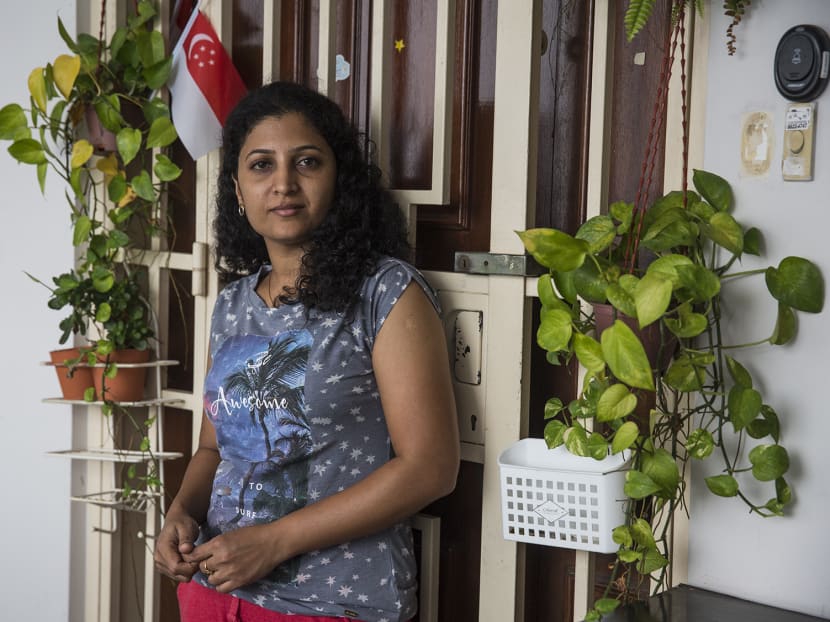
And while some residents cited the lack of competition for the high prices of groceries at the only wet market at Punggol Plaza, the prevalence of online grocers and supermarkets sprouting around Punggol have alleviated the problem somewhat.
“It's not fashionable to have wet markets now,” said Mr Kok, the 20-year resident of Punggol. “It is a good-to-have, but not a must-have.”
Halal food options in coffee shops are also sorely lacking, Muslim residents told TODAY.
At the end of the day, many residents said that the growth of the town has to be moderated, and a balance has to be struck between the new developments and preserving the tranquillity of Punggol.
“I hope the Government preserves the greenery at Punggol," said Ms Alia. She added: “However, it can also be scary if the estate is too quiet.”
EASING THE PAIN POINTS
In 2013, Member of Parliament (MP) for Pasir Ris-Punggol GRC Teo Ser Luck said that the transport infrastructure in Punggol “must be aligned with the town development itself”.
“If not, there will always be one catching up with the other,” he said.
Apart from the new link road connecting Punggol Central to the TPE and KPE, there are existing works for an additional exit point from the TPE into Punggol, MP Sun Xueling, who looks after the Punggol West area, told TODAY.
“In the longer term, with more developments in the northern and in the western parts of Punggol, we are looking into new road infrastructure works to cater to increased activity in these areas,” she added.
Punggol resident Ms Wong suggested increasing the frequency of the town’s LRT service.
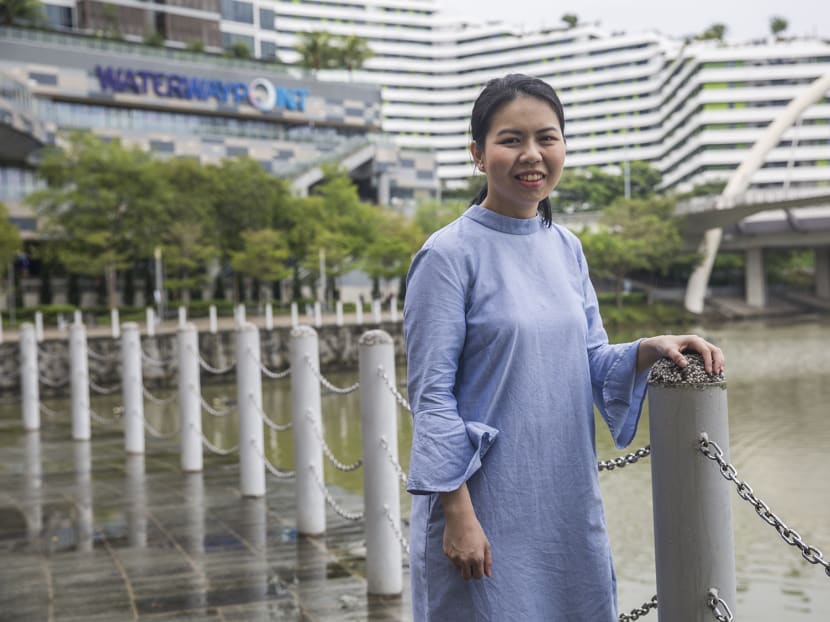
“There are only two cabins for the Punggol LRT. Besides the residents, many foreign workers working on the new developments in Punggol also use the LRT, which makes it very crowded,” she said.
Ms Wong added: “The queues can get quite ridiculous. Besides increasing the frequency of the trains, the authorities should consider increasing (the two-cabin trains) to four cabins.”
While the lagging transport infrastructure was a main bugbear for many residents, Mr Cheong felt that it was not only the hardware that needs improvement.
THE PRICE AND REWARDS OF DEVELOPMENT
Amid its rapid growth, Punggol’s “kampung spirit” has been lost, Mr Cheong said. He believes that the hawker centre at the upcoming Punggol Town Hub is one place to foster such a community spirit.
“It will also be good to have (another) wet market. The current one at Punggol Plaza isn’t really a wet market, and I think some people miss having the ‘kampung spirit’ at these places,” he said.
As Punggol develops at a breakneck speed, some long-time residents are witnessing — before their very eyes — the tension between development and preserving the things they used to love about the area.
Mr Cheong reminisced that he used to be able to see the Straits of Johor from his unit at Punggol Field, which is near the TPE. The town’s skyline had also changed dramatically in his 20 years in Punggol, he said.
“When I first moved in, Punggol was like a ghost town. You could even hear the wild dogs barking at night. Punggol felt more laid-back then,” he added.
“I am disappointed that the sea view has gone, but it has been made up with more amenities,” Mr Cheong said.
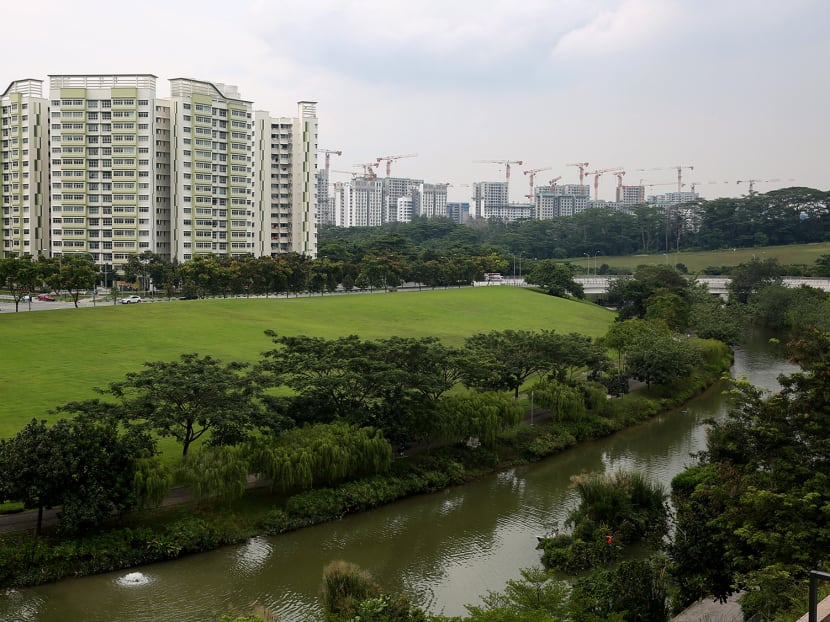
Ms Isabelle Lim, 22, who has lived in the estate for the past 11 years with her parents, described Punggol’s growth as “a little painful”. Still, the student at Singapore Management University acknowledged that “with more people also comes more amenities, and the amenities are nice”.
“My family and I used to like Punggol because it was quiet, but now that Punggol is quite self-sufficient, living here is relatively convenient,” she added.
Sign up for TODAY's WhatsApp service. Click here:






